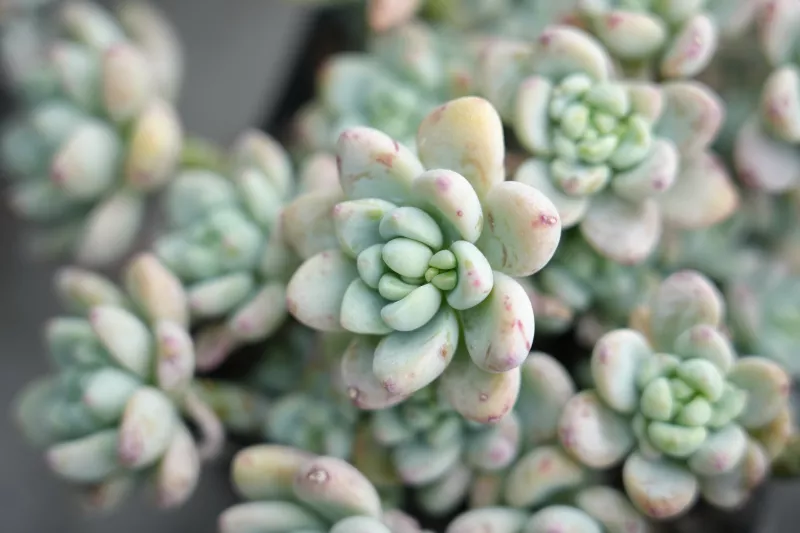Succulents have surged in popularity over the past few years, adorning homes, offices, and gardens with their unique charm. These hardy plants are known for their ability to thrive in arid conditions and require minimal care. However, one common misconception about succulents is that they can survive without sunlight. In this comprehensive guide, we will explore the relationship between succulents and sunlight, and delve into their light requirements, signs of sunlight deprivation, and alternative lighting solutions.
Understanding Succulents
Succulents are a diverse group of plants that store water in their fleshy leaves, stems, or roots. This adaptation allows them to withstand long periods of drought, making them ideal for arid environments. While they are resilient, they still have specific needs, one of which is sunlight.
1. The Role of Sunlight
Sunlight is a fundamental requirement for succulents, just as it is for most plants. It serves several crucial functions in their growth and development:
Photosynthesis: Succulents, like all green plants, perform photosynthesis to produce energy. Sunlight is essential for this process, as it provides the energy needed to convert carbon dioxide and water into glucose and oxygen.
Preventing etiolation: Sunlight helps succulents maintain their compact, attractive shape. Without adequate light, succulents may become elongated and leggy, a condition known as etiolation.
Coloration: Sunlight plays a pivotal role in enhancing the vibrant colors of many succulent varieties. Insufficient light can lead to faded or dull colors.
2. Succulent Light Requirements
Different succulent species have varying light requirements. Understanding these requirements is essential for ensuring the health and vitality of your succulents. Here are the general categories of light requirements for succulents:
Full Sun: Some succulents, such as Echeveria and Sedum, thrive in direct sunlight for several hours each day. They require at least 6 hours of bright sunlight to flourish.
Partial Sun: Many succulents do well in indirect or filtered sunlight. These plants can tolerate a few hours of direct sunlight but prefer shade during the hottest part of the day.
Low Light: A few succulent species, such as Snake Plant (Sansevieria) and Zamioculcas Zamiifolia (ZZ plant), can adapt to low-light conditions. However, they will grow more slowly and may not exhibit their characteristic features.
3. Signs of Sunlight Deprivation
If your succulent isn’t receiving enough sunlight, it will display signs of stress and unhappiness. Here are some common indicators of sunlight deprivation:
Etiolation: As mentioned earlier, succulents will stretch and become leggy as they reach for the light source.
Color Fading: The vibrant colors of your succulent may fade, and the plant may appear pale or washed out.
Slower Growth: Succulents not receiving adequate light will grow more slowly than their well-lit counterparts.
Leaf Dropping: In extreme cases, succulents may drop leaves or exhibit unusual elongation.
4. Finding the Right Light Conditions
To ensure your succulents thrive, it’s crucial to provide them with the appropriate lighting conditions. Here are some tips to help you find the right balance:
Observe Natural Habitat: Research your succulent species to understand their native habitat. This can provide valuable insights into their light requirements.
Rotate Your Succulents: If you’re growing succulents indoors, periodically rotate them to ensure all sides receive equal sunlight exposure.
Supplemental Lighting: In areas with insufficient natural light, consider using grow lights specifically designed for plants. These lights can provide the necessary spectrum for photosynthesis.
Monitor Light Duration: Pay attention to the duration of light your succulents receive. Use timers for grow lights to maintain a consistent lighting schedule.
5. Common Myths Debunked
Several myths and misconceptions surround succulents and their light requirements. Let’s debunk a few of these:
Myth: Succulents can thrive in complete darkness. Succulents need some level of light to survive and thrive; they cannot grow in total darkness.
Myth: Succulents can survive on artificial light alone. While grow lights can supplement natural light, they are not a substitute for sunlight. Succulents still require some exposure to the sun’s natural spectrum.
Myth: Succulents don’t need any care. While succulents are low-maintenance, they still require proper care, including appropriate lighting, watering, and soil conditions.
Conclusion
Succulents are fascinating and resilient plants that can bring beauty to any space. However, the belief that they can live without sunlight is a misconception. Adequate sunlight is essential for their growth, health, and vibrant appearance. Understanding your succulent’s specific light requirements and providing the right conditions will ensure they thrive.
Remember that the amount of sunlight needed varies among succulent species, so research your plants and adapt their care accordingly. Whether you’re growing succulents indoors or outdoors, finding the right balance of sunlight is key to helping your succulents flourish and thrive for years to come.


